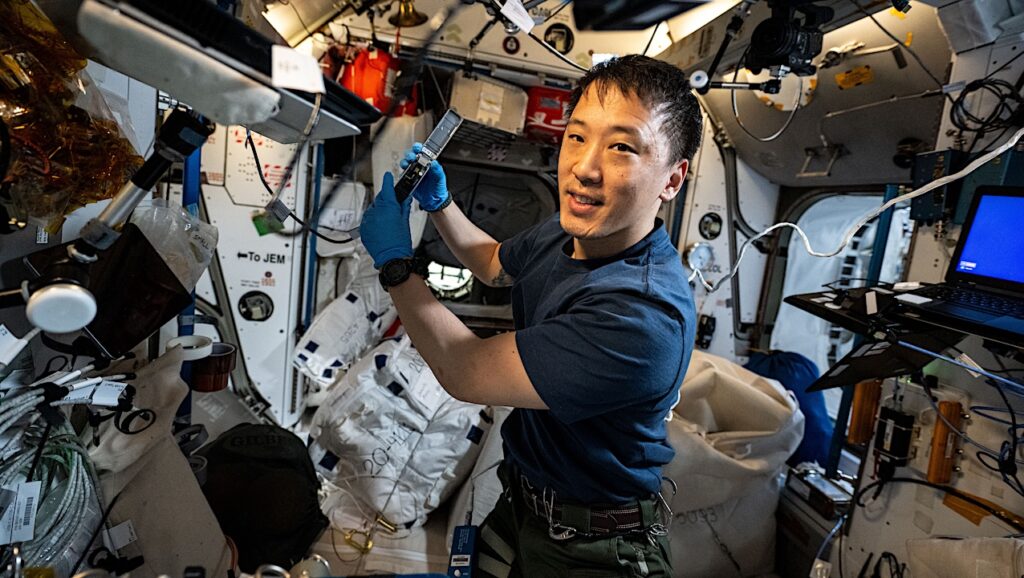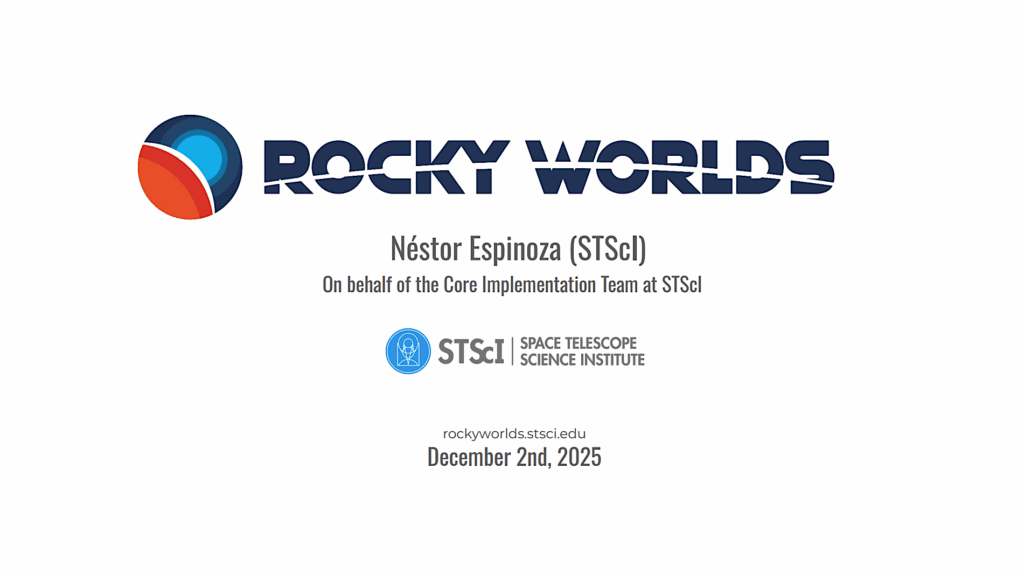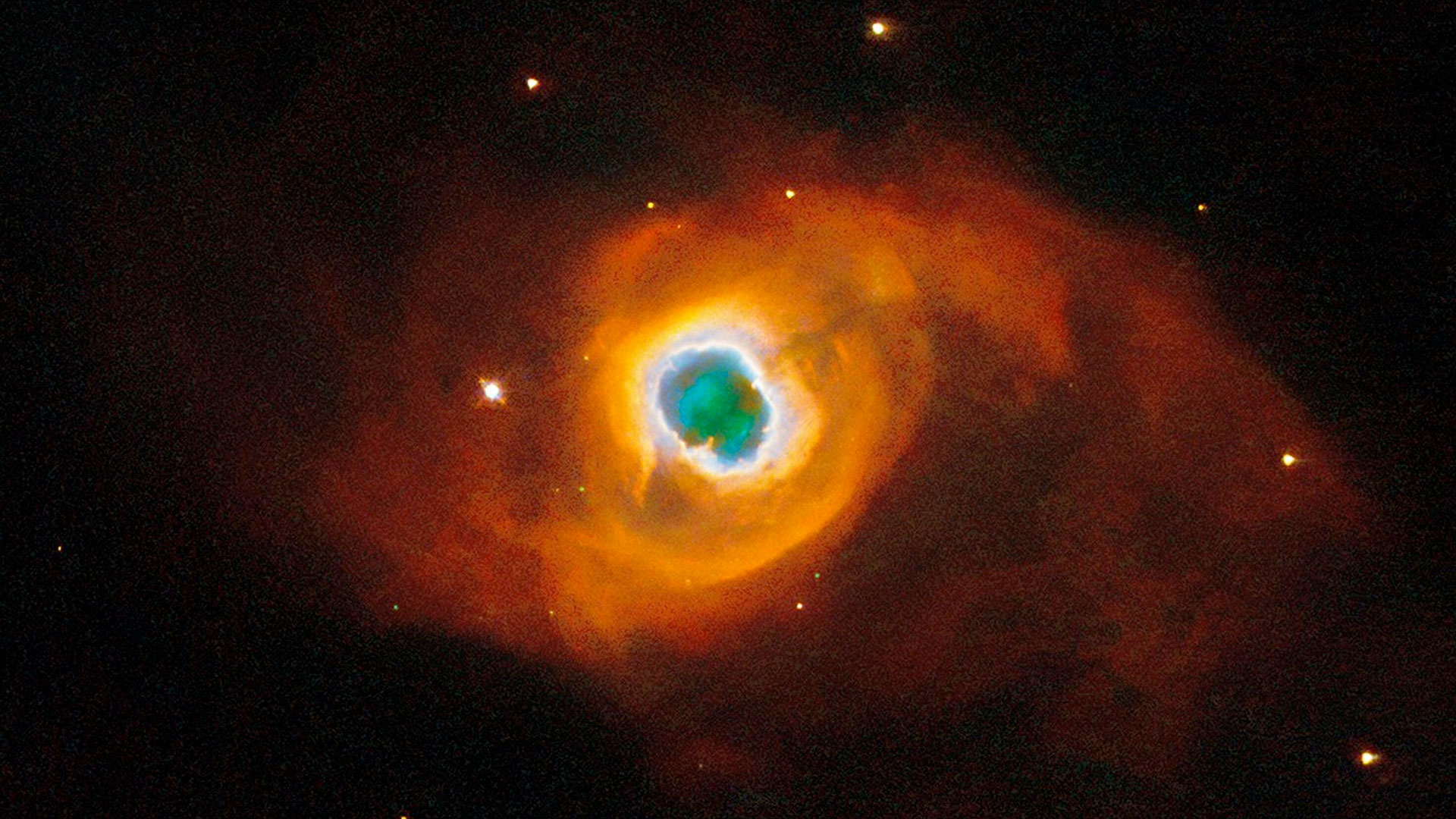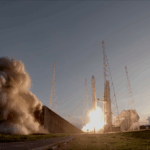Now Reading: Numerical Simulations Of The Interaction Between The Stellar Magnetic Field And A Planet
-
01
Numerical Simulations Of The Interaction Between The Stellar Magnetic Field And A Planet
Numerical Simulations Of The Interaction Between The Stellar Magnetic Field And A Planet
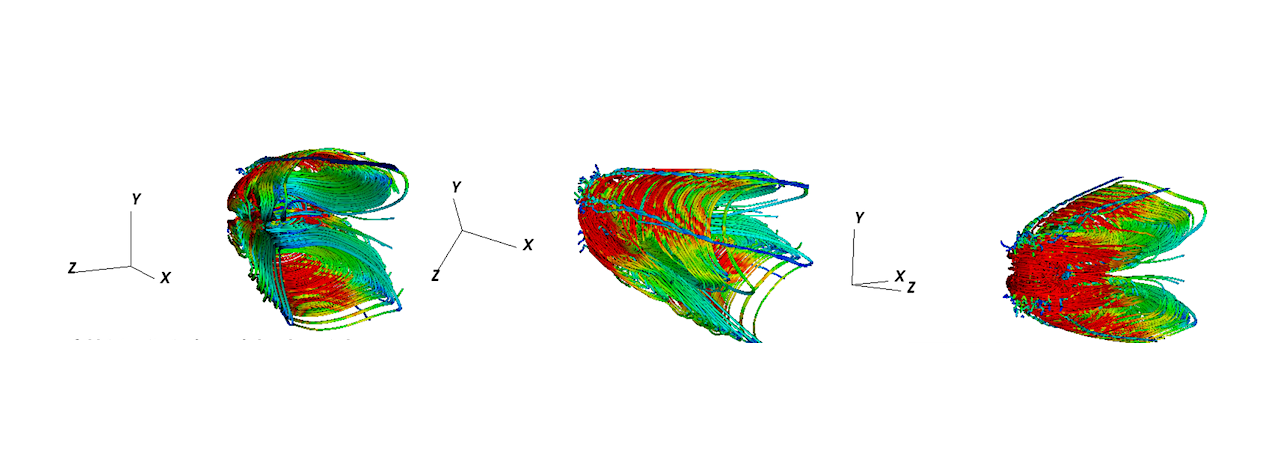
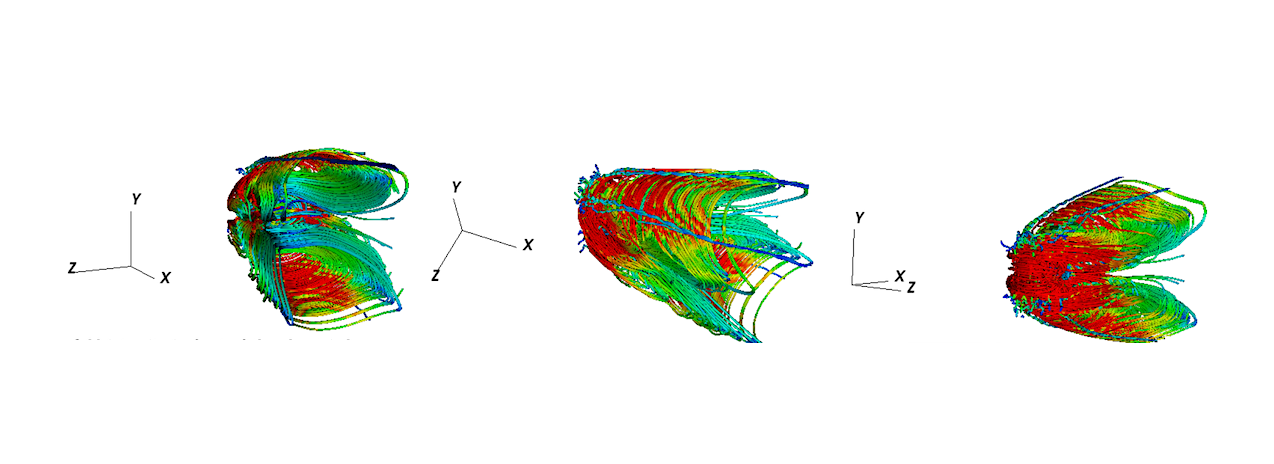
Current density (J⃗ = ∇ × B/ ⃗ (4π)) streamlines for an initial magnetic field B0 = 0.1 (the magnetic field streamlines corresponding to the same simulation are shown in the upper panel of Figure 2). The computational box is rotated as shown in the coordinate axes on the left. The color scale corresponds to the intensity of the current density, from blue (lower) to red (larger current density). As the magnetic field is nearly vertical, the current density is nearly zero on the left of the computational box (with respect to the x axis). Downstream (with respect to the planet position), the current density streamlines form a complex structure, with cavities (with low current density) which start from the position of the planet and extend towards larger values of y and z (see upper right panel). The projection of the current density along the x − y plane forms a structure which resembles the one obtained in analytical models (Figure 4). — astro-ph.EP
Kepler and TESS observations led to the discovery of many close-in super Earths, including some with ultra-short orbital periods (≲1 day).
During and shortly after their multi-Myr formation epoch, their GKM host stars generally have kilogauss magnetic fields which can exert torques on the orbits of nearby super- Earths.
In this work, we examine one aspect of this interaction: the magnetic torque resulting from Alfvén-wing drag on non-corotating, non-magnetized planets engulfed by the host stars’ stellar wind.
We compute the magnitude of this torque for a range of stellar magnetic field strengths, and planetary orbital velocities.
We also model the planets’ orbital evolution, taking into account for stellar spin down and magnetic field decay, and derive the boundaries within which ultra-short-period super-Earths can survive.
Fabio De Colle, Douglas N.C. Lin, Chen Chen, Gongjie Li
Comments: 15 pages, 11 figures, submitted to MNRAS
Subjects: Earth and Planetary Astrophysics (astro-ph.EP); Solar and Stellar Astrophysics (astro-ph.SR)
Cite as: arXiv:2504.09390 [astro-ph.EP] (or arXiv:2504.09390v1 [astro-ph.EP] for this version)
https://doi.org/10.48550/arXiv.2504.09390
Focus to learn more
Submission history
From: Fabio De Colle
[v1] Sun, 13 Apr 2025 00:53:19 UTC (1,733 KB)
https://arxiv.org/abs/2504.09390
Astrobiology,
Stay Informed With the Latest & Most Important News
-
 012024 in Review: Highlights from NASA in Silicon Valley
012024 in Review: Highlights from NASA in Silicon Valley -
 02Panasonic Leica Summilux DG 15mm f/1.7 ASPH review
02Panasonic Leica Summilux DG 15mm f/1.7 ASPH review -
 03From Polymerization-Enabled Folding and Assembly to Chemical Evolution: Key Processes for Emergence of Functional Polymers in the Origin of Life
03From Polymerization-Enabled Folding and Assembly to Chemical Evolution: Key Processes for Emergence of Functional Polymers in the Origin of Life -
 04How New NASA, India Earth Satellite NISAR Will See Earth
04How New NASA, India Earth Satellite NISAR Will See Earth -
 05And Thus Begins A New Year For Life On Earth
05And Thus Begins A New Year For Life On Earth -
 06Astronomy Activation Ambassadors: A New Era
06Astronomy Activation Ambassadors: A New Era -
07SpaceX launch surge helps set new global launch record in 2024













